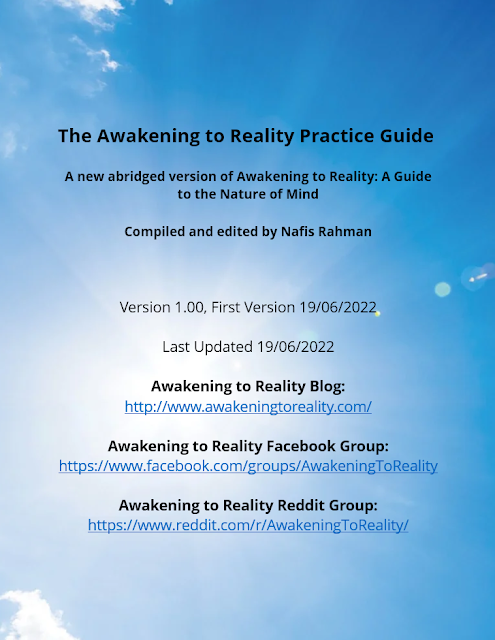Shared by Kyle Dixon/Krodha on Reddit:
https://www.reddit.com/r/Buddhism/comments/1c04oou/an_exposition_on_selflessness_according_to/
An Exposition on Selflessness According to Mahāyāna and Vajrayāna by Dakpo Tashi Namgyal
An exposition on selflessness (anātman) by Dakpo Tashi Namgyal (1511-1587) from his text *Mahāmudrā: The Moonlight* with relevant citations from Mahāyāna scripture:
To identify the self and the mind’s clinging to it, it is said that although duality is devoid of essence, it is misconceived as possessing substantiality, due to inbred delusion. The mind develops attachments and clings to the two self-entities of subject and object. Conversely, the nonexistence of the two innate selves is nonduality.
Candrakīrti in his commentary to the *Catuḥśataka* says:
>*What is described as the self (ātman) is the essence or the inborn entity, the existence of which does not depend on external conditions. Selflessness (anātman) is without such a self. Selflessness of material and mental phenomena are so designated because the two distinctions are made in the form of material elements and personality (dharma and pudgala).*
Dharmakīrti says:
>*The dual realities categorized according to their inherent characteristics are designated as “dharmas” (the elements of material phenomena) while personality is stated to consist of man’s stream-consciousness (mindstream) that coalesces with the physical constituents.*
The *Dho Silbu* summarizes:
>*All [the realities of] the elements bearing inherent characteristics are designated as “dharmas.” The stream-consciousness is designated as personality (pudgala).*
The self of personality (pudgala-ātman) consists of the innate consciousness that assigns to itself, as its own nature, an eternal, independent entity and thereby clings to the notion of “I” or “self.” The self of material elements (dharma-ātman) is the product of the mind grasping at realities, such as the physical constituents of life, as being objective realities composed of innate substance and clinging to them as such. These two “selves” engender karma, defilement, affliction and harm.
Śrī Dharmakīrti comments:
>*By conceiving of the self, one perceives the existence of others. Differentiating between self and others causes attachment and hatred. Entanglement with these causes afflictions.*
The *Ratnāvalī* elucidates:
>*As long as clinging to the aggregates [of life] exists, so long does clinging to the self persist. Where there is clinging to the self, there is karma. Karma causes rebirth.*
In order to eliminate the stream of existence caused by clinging to the self, it is essential to meditate upon the meaning of selflessness.
Dharmakīrti states:
>*Without subduing the subjective base of this [self], one cannot eliminate it.*
The *Catuḥśataka* comments:
>*When one perceives nonselfhood in the perceptive base, the seed of cyclic existence will cease to exist.*
The *Madhyamakāvatāra* says:
>*All defilements and afflictions originate from conceiving as real the transient aggregates of being. Only by perceiving this and investigating the realms of this self, can a yogin eliminate it [the self].*
Only by meditating upon the truth of nonselfhood can one eliminate the deluded view and the clinging to the “I” and “mine.” Such an elimination terminates rebirth caused by clinging, sensuality, and the rest. In this way liberation is fully achieved.
The *Mūlamadhyamakakārikā* says:
>*Upon the elimination of “I’ and “mine,” internal and external realities, the psychophysical aggregates will cease. With this, rebirth, karma and defilements will cease, and thus liberation will be achieved.*
The *Ratnāvalī* states:
>*Assertion of the reality of “I” and “mine” is a distortion of the dharma.*
The self of the personality is thus stated to be nonexistent. The logic concerning the nonexistent self states that, if it exists, it must emerge either in oneself, in others, in both or in the three periods of time. Since this self has not emerged in these, it is nonexistent. The same text states:
>*Since the self has not emerged out of oneself, others, or both, nor been born in the three periods of time, clinging to the self can therefore be eliminated.*
Furthermore, if the self of personality exists, it must necessarily be either identical to the psychophysical aggregates or distinct from them. Both of these hypotheses are untenable.
The *Mūlamadhyamakakārikā* comments:
>*When one says that no self exists except for the rebirth-seeking aggregates, it means that these aggregates are identical with the self. Then the self is indeed nonexistent.*
The same text states:
>*If the aggregates are the self, then it too will be subject to birth and death.*
Thus the contention that the self is identical with the psychophysical aggregates has been refuted. If one assumes that the [independent] self is subject to the cycle of birth and death, this [self-contradiction] will be refuted through the following inferences. [The self that lost its enduring nature would make the possibility of] recollecting untenable. Memory of a past life would not be possible, committed karma would not product results, and one would experience effects without karmic causes.
The separate realities of the self and the aggregates are also refuted in the same text:
>*If the self is a separate entity from the psychophysical aggregates, the characteristics of these aggregates become invalid.*
The same text continues:
>*The self is an entity separate from the rebirth-seeking aggregates - this is untenable. For if objective reality without the aggregates were possible, then cognition would not be possible.*
In the *Madhyamakāvatāra,* it is said:
>*For all these reasons the self does not exist apart from the aggregates; except for the aggregates, no perceiver exists.*
Eliminating the self of personality by implication negates the existence [of the substantive nature] of its parts such as the eyes, nose and the rest.
The *Mūlamadhyamakakārikā* states:
>*If the “I” does not exist, how can there be the “mine?”*
The *Madhyamakāvatāra* states:
>*Because there is no actor, there is no action, for there can be no self of a person who is nonexistent. Therefore, the seeker of truth who conceives the emptiness of “I” and “mine” will achieve perfect liberation.*
The following is a summary of the meditation upon nonselfhood of personality, as stated in the first *Bhāvanākrama:*
>*There is no personality to be perceived apart from the aggregates, elements and sense faculties. The self is not the essence of the aggregates, etc., because they are essentially transient and composite, whereas personality has been defined by others [such as those of the Brahmanic tradition] as an eternal and independent essence. This self or another undefinable self cannot possibly exist as substantial entities, since there is no reality of substance. Establish all that is conceived as “I” and “mine” in the transient world as a total delusion!*













